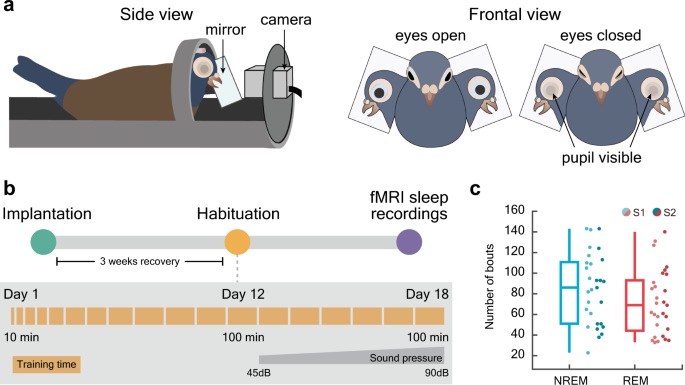2023-06-05 ワシントン大学セントルイス校
◆COVID-19パンデミックの開始以来、数千人の腎臓移植が行われましたが、ウイルスに陽性であった人々から提供された腎臓による移植手術後の感染報告はありませんでした。ほとんどの提供者はCOVID-19以外の原因で死亡していましたが、彼らのうち1週間以内にウイルスの陽性が確認された人々においても、移植手術の成功には影響がありませんでした。
<関連情報>
- https://medicine.wustl.edu/news/donated-kidneys-from-deceased-covid-19-patients-are-safe-to-transplant/
- https://jamanetwork.com/journals/jamanetworkopen/fullarticle/2805378
COVID-19を有する死亡ドナーからの腎臓の成人レシピエントにおける使用パターンと移植のアウトカムについて Patterns in Use and Transplant Outcomes Among Adult Recipients of Kidneys From Deceased Donors With COVID-19
Mengmeng Ji, Amanda J. Vinson, Su-Hsin Chang, Massini Merzkani, Krista L. Lentine, Yasar Caliskan, Kristin Progar, Nicole Nesselhauf, Casey Dubrawka, Tarek Alhamad
JAMA Network Published:May 30, 2023
DOI:10.1001/jamanetworkopen.2023.15908

Key Points
Question What are the national patterns in kidney use and transplant outcomes among adult recipients of kidneys from deceased donors with active or resolved COVID-19?
Findings In this cohort study of 35 851 deceased donors and 45 912 adult transplant recipients in the US, the likelihood of nonuse of kidneys from active or resolved COVID-19–positive donors decreased over time, with no higher likelihood of nonuse for kidneys from COVID-19–positive donors in 2023. Donor COVID-19 positivity was not associated with worse transplant outcomes within 2 years after transplant.
Meaning These findings suggest that the use of kidneys from donors with active or resolved COVID-19 is safe, with excellent outcomes during medium-term follow-up.
Abstract
Importance While the COVID-19 pandemic enters a new phase and the proportion of individuals with a previous COVID-19 diagnosis increases, the national patterns in kidney use and medium-term kidney transplant (KT) outcomes among patients receiving kidneys from active or resolved COVID-19–positive donors remain unknown.
Objective To evaluate the patterns in kidney use and KT outcomes among adult recipients of kidneys from deceased donors with active or resolved COVID-19.
Design, Setting, and Participants This retrospective cohort study was conducted using national US transplant registry data from 35 851 deceased donors (71 334 kidneys) and 45 912 adult patients who received KTs from March 1, 2020, to March 30, 2023.
Exposure The exposure was donor SARS-CoV-2 nucleic acid amplification test (NAT) results, with positive NAT results within 7 days before procurement defined as active COVID-19 and positive NAT results 1 week (>7 days) before procurement defined as resolved COVID-19.
Main Outcomes and Measures Primary outcomes were kidney nonuse, all-cause kidney graft failure, and all-cause patient death. Secondary outcomes were acute rejection (ie, rejection in the first 6 months after KT), transplant hospitalization length of stay (LOS), and delayed graft function (DGF). Multivariable logistic regression analyses were performed for kidney nonuse, rejection, and DGF; multivariable linear regression analyses were performed for LOS; and multivariable Cox regression analyses were performed for graft failure and all-cause death. All models were adjusted for inverse probability treatment weighting.
Results Among 35 851 deceased donors, the mean (SD) age was 42.5 (15.3) years; 22 319 (62.3%) were men and 23 992 (66.9%) were White. Among 45 912 recipients, the mean (SD) age was 54.3 (13.2) years; 27 952 (60.9%) were men and 15 349 (33.4%) were Black. The likelihood of nonuse of kidneys from active or resolved COVID-19–positive donors decreased over time. Overall, kidneys from active COVID-19–positive donors (adjusted odds ratio [AOR], 1.55; 95% CI, 1.38-1.76) and kidneys from resolved COVID-19–positive donors (AOR, 1.31; 95% CI, 1.16-1.48) had a higher likelihood of nonuse compared with kidneys from COVID-19–negative donors. From 2020 to 2022, kidneys from active COVID-19–positive donors (2020: AOR, 11.26 [95% CI, 2.29-55.38]; 2021: AOR, 2.09 [95% CI, 1.58-2.79]; 2022: AOR, 1.47 [95% CI, 1.28-1.70]) had a higher likelihood of nonuse compared with kidneys from donors without COVID-19. Kidneys from resolved COVID-19–positive donors had a higher likelihood of nonuse in 2020 (AOR, 3.87; 95% CI, 1.26-11.90) and 2021 (AOR, 1.94; 95% CI, 1.54-2.45) but not in 2022 (AOR, 1.09; 95% CI, 0.94-1.28). In 2023, kidneys from both active COVID-19–positive donors (AOR, 1.07; 95% CI, 0.75-1.63) and resolved COVID-19–positive donors (AOR, 1.18; 95% CI, 0.80-1.73) were not associated with higher odds of nonuse. No higher risk of graft failure or death was found in patients receiving kidneys from active COVID-19–positive donors (graft failure: adjusted hazard ratio [AHR], 1.03 [95% CI, 0.78-1.37]; patient death: AHR, 1.17 [95% CI, 0.84-1.66]) or resolved COVID-19–positive donors (graft failure: AHR, 1.10 [95% CI, 0.88-1.39]; patient death: AHR, 0.95 [95% CI, 0.70-1.28]). Donor COVID-19 positivity was not associated with longer LOS, higher risk of acute rejection, or higher risk of DGF.
Conclusions and Relevance In this cohort study, the likelihood of nonuse of kidneys from COVID-19–positive donors decreased over time, and donor COVID-19 positivity was not associated with worse KT outcomes within 2 years after transplant. These findings suggest that the use of kidneys from donors with active or resolved COVID-19 is safe in the medium term; further research is needed to assess longer-term transplant outcomes.

